Slowing the Flow of Water in the Peak District
Moorland restoration work began in 2023 above the Peak District town of Buxton
Important science and data site bringing together many monitoring techniques on one site for the first time
Project funded by Nestlé Waters UK, the Environment Agency, Severn Trent and the Harris & Sheldon Group
Restoration works are underway on beautiful uplands above the Derbyshire town of Buxton in the Peak District. The blocking of erosion gullies with materials such as stone and sphagnum moss planting is in progress in order to increase the storage and retention of water on the Combs Moss plateau. This will slow the flow of water off the moors by creating conditions to hold water on the moorland for longer.
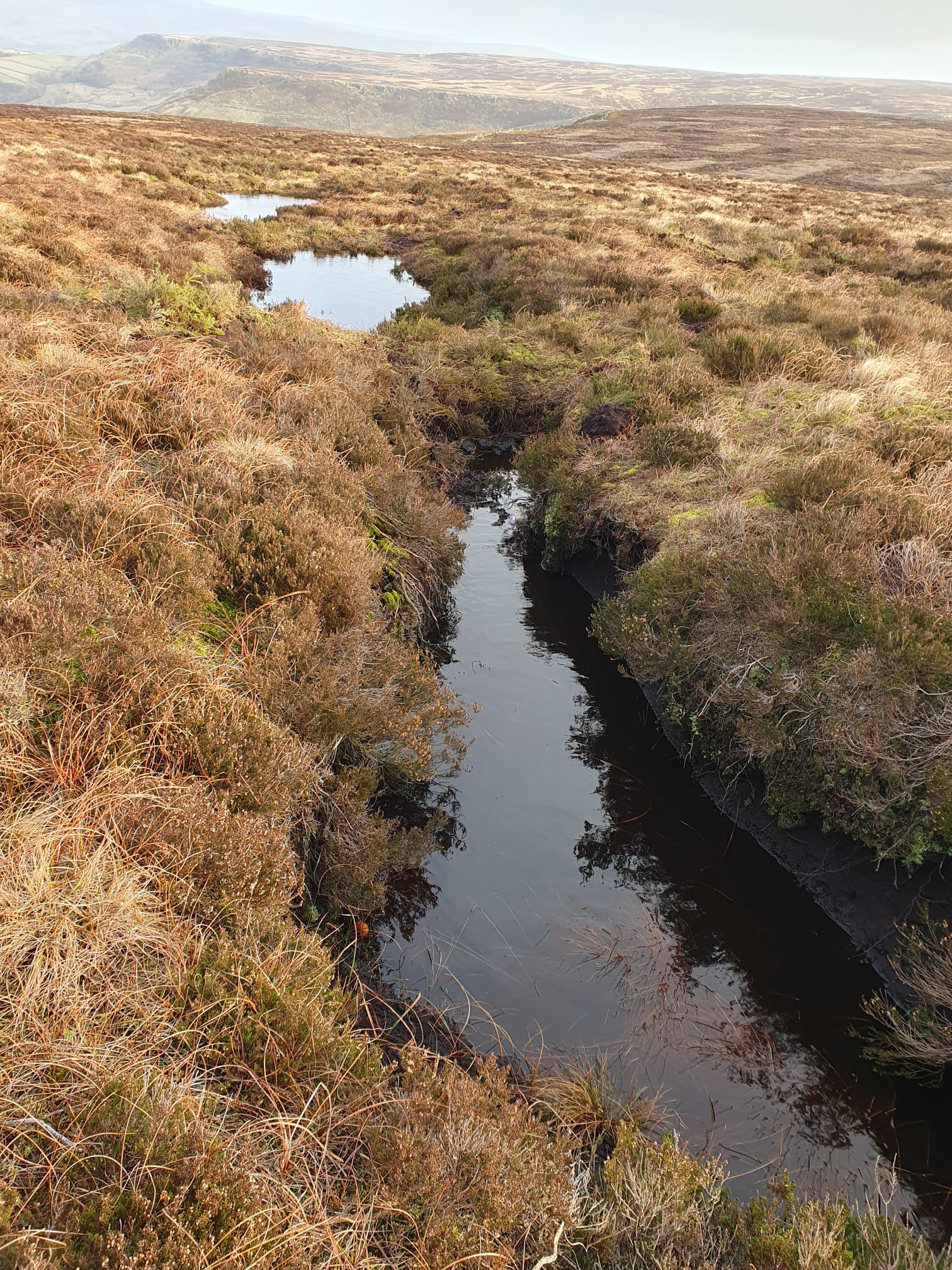
Rewetting work will help to mitigate the risk of flooding in the town below.
Combs Moss already has large areas of habitats in a good condition, however, revegetation work will increase the biodiversity of the site by adding more sphagnum moss, cotton grasses and dwarf shrubs.
On large flatter areas of the upland moors contour bunds made of peat will be used to hold water on the land which will also provide a home for insects, an important food source for birds and reptiles.
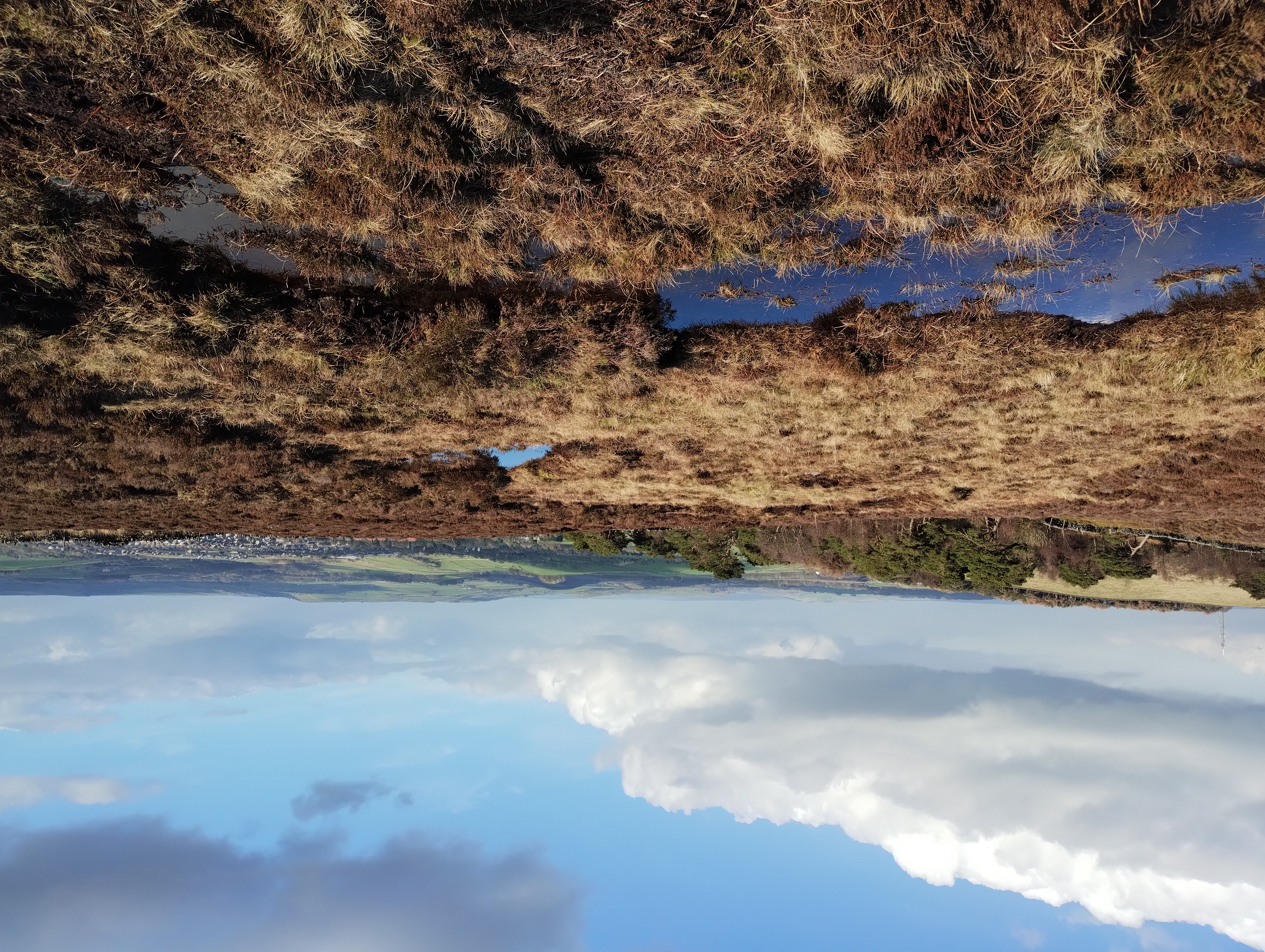
Working together with the University of Derby, an extensive science and monitoring programme brings together many data gathering techniques used across the Peak District and South Pennines onto one site for the first time. Onsite equipment is measuring water flow over the surface and in gullies, allowing the Partnership to compare the flow of water from the site before and after restoration. This work will improve understanding of ‘peak flow’ and its impact downstream. Techniques include:
- Monitoring the water table – Moors for the Future Partnership will be monitoring water level variables using both manual and automated dipwells.
- Water storage - including open water storage such as ground ponding will be monitored using time-lapse camera, depth gauge boards and dipwells.
- Water flow - will be monitored using V-notch weirs at the outflow point of each mini catchment restoration area.
- The science and monitoring team will be measuring water in (rainfall) and water out (streamflow) at high temporal resolution every 10 minutes to analyse how the catchments respond to rainfall, and how that changes after restoration
- The University of Derby will measure the impacts of different restoration methods on hydrology, biodiversity and carbon, comparing the changes in water levels on the amount of carbon dioxide and methane the peatlands release.
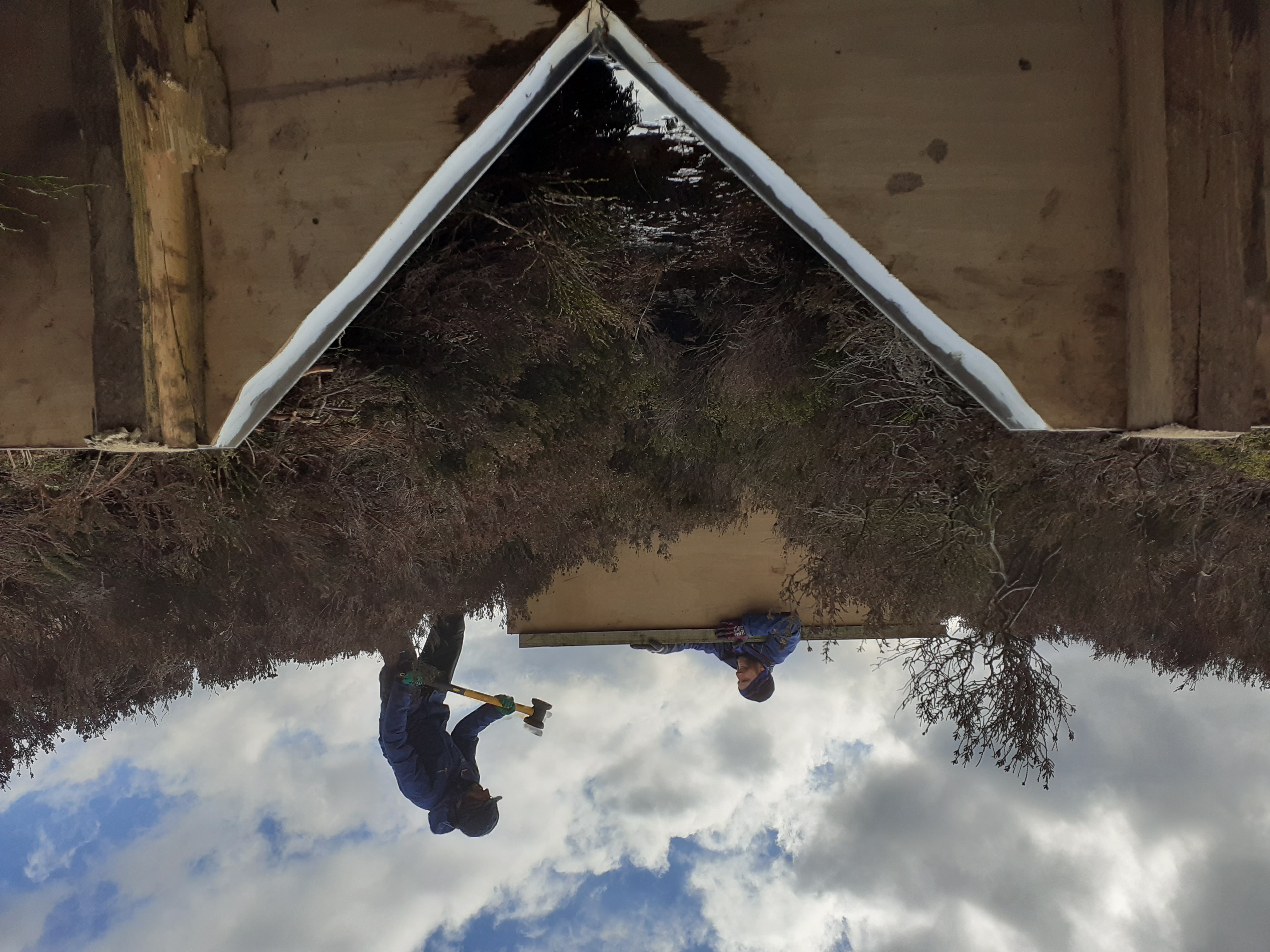
Local employer, Nestlé Waters UK, operates in Buxton and is supporting the project as part of its efforts to lead the regeneration of local water cycles through nature-based solutions that provide benefits to both the water and the community.
The Environment Agency are funding this project with partners, with the aim to help reduce the impact of flooding to communities through Natural Flood Management and peatland restoration.
Harris & Sheldon Group, the landowner of Combs Moss, is supporting the project in order improve the diversity and abundance of wildlife on the moor, and enhance the natural carbon storage that good quality peatland is able to provide.
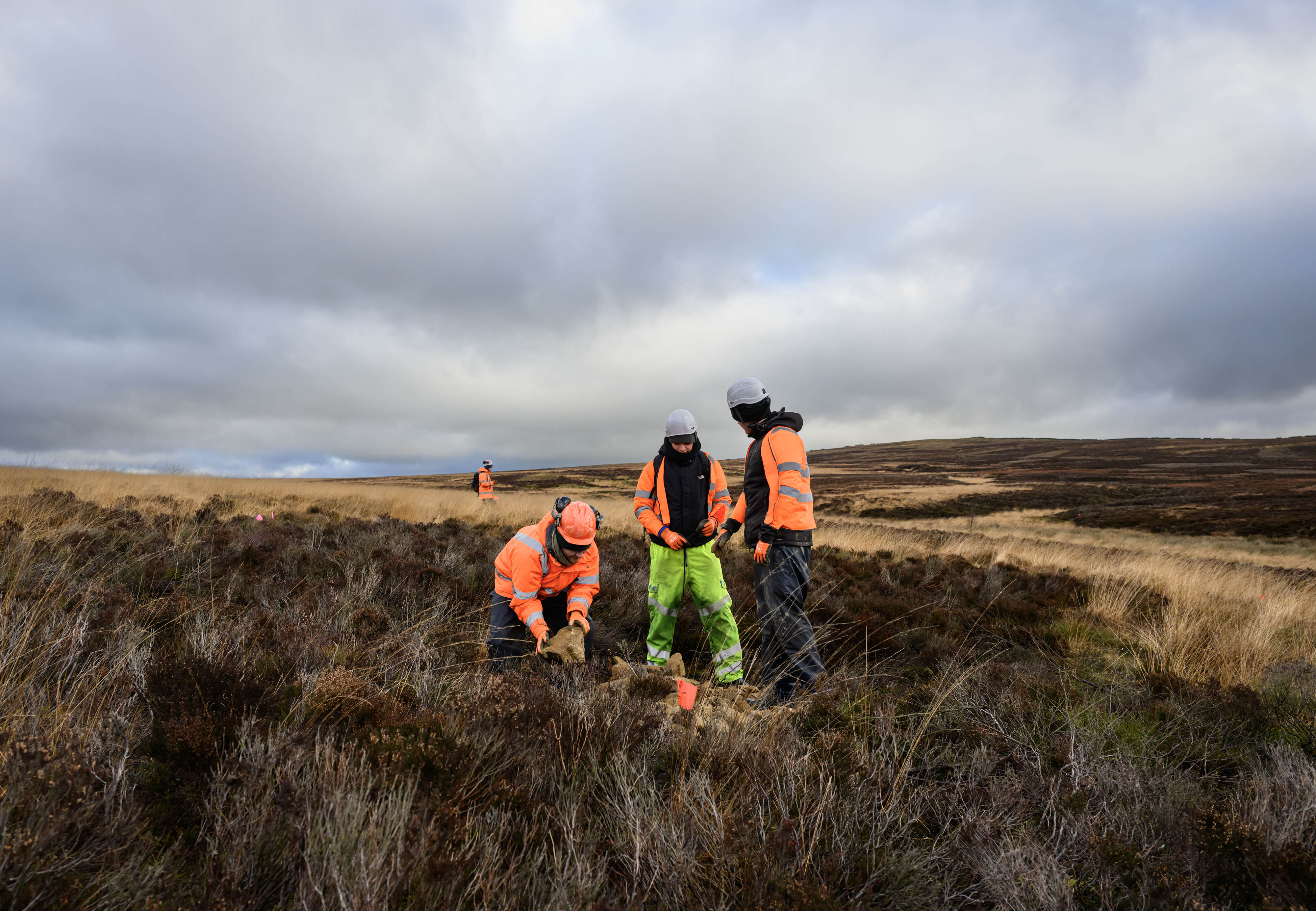
October 2024
New season well underway
This season's restoration work schedule on Combs Moss is well underway. All the large timber dams due to be installed on site are now complete. This October work will begin to create 740 bunds on site to slow the flow of water. A programme of sphagnum moss planting is scheduled to begin in 2025.
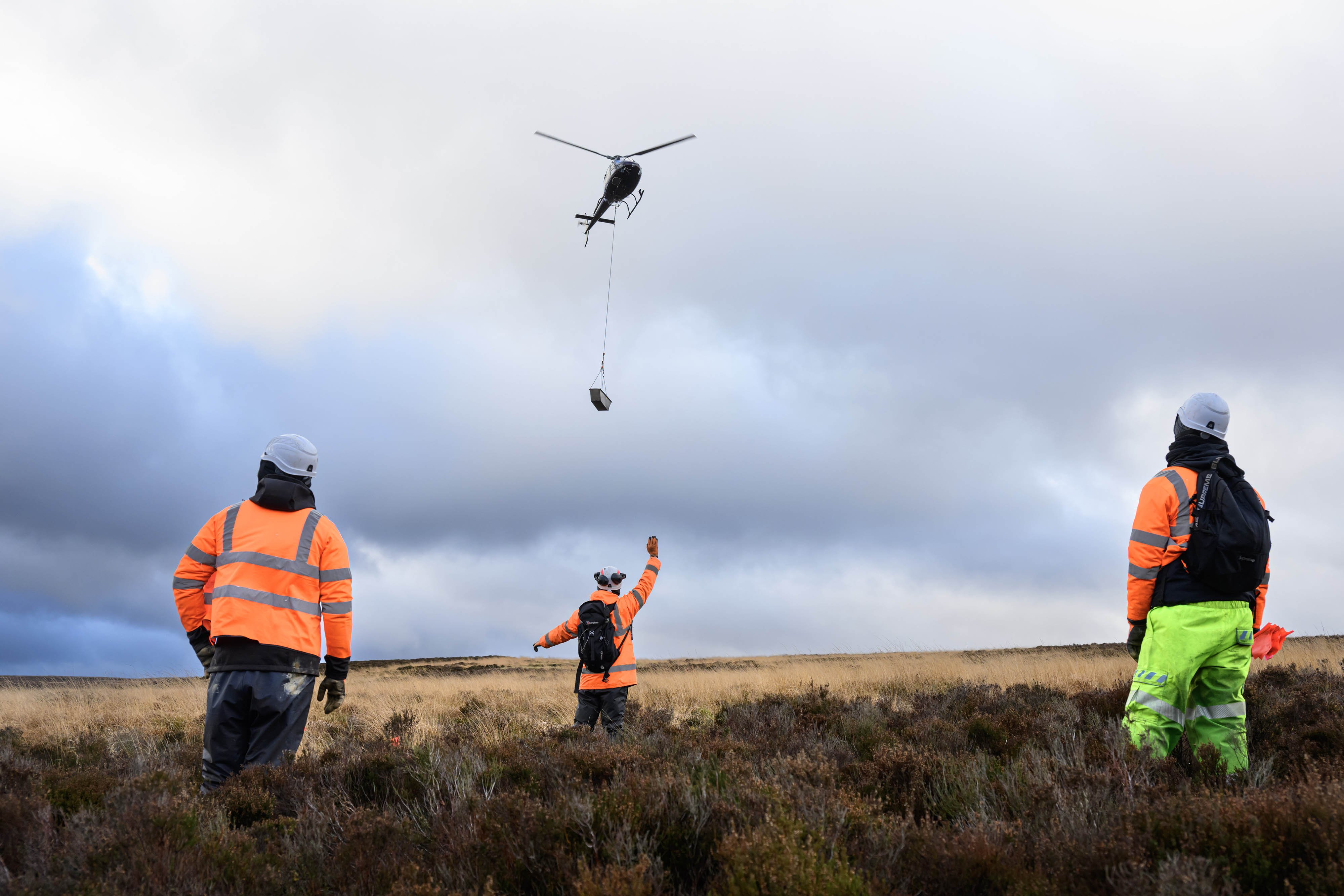
April 2024
Year one works season complete
101,100 sphagnum moss plug plants were planted over 86 hectares of moorland, with a further 186,600 planned for the 2024-2025 season.
624 stone dams were installed, alongside 51 timber dams, 26 coir log dams and 993 peat dams. 933 metres of steep sided slopes were reprofiled and 61 peat pipes which would have carried water underground were blocked. In addition 11 hectares of bunding was undertaken, which will help to hold water and slow the flow.